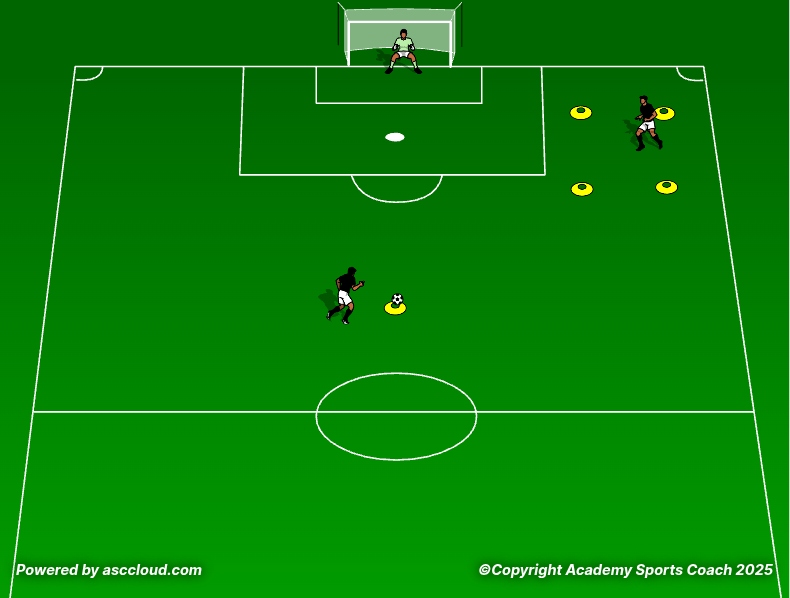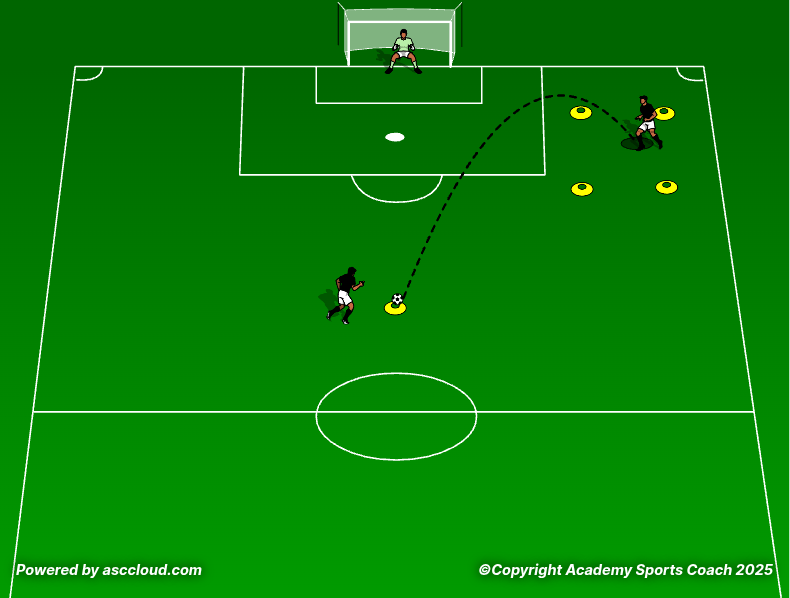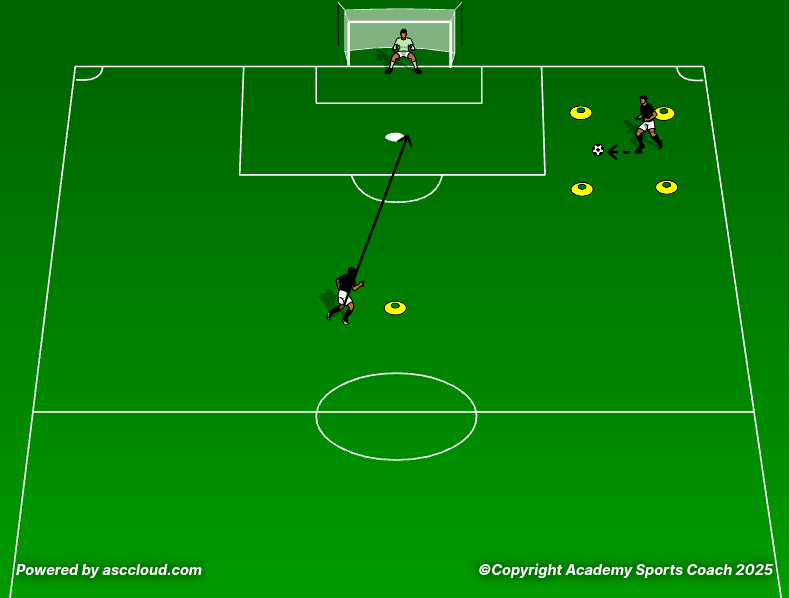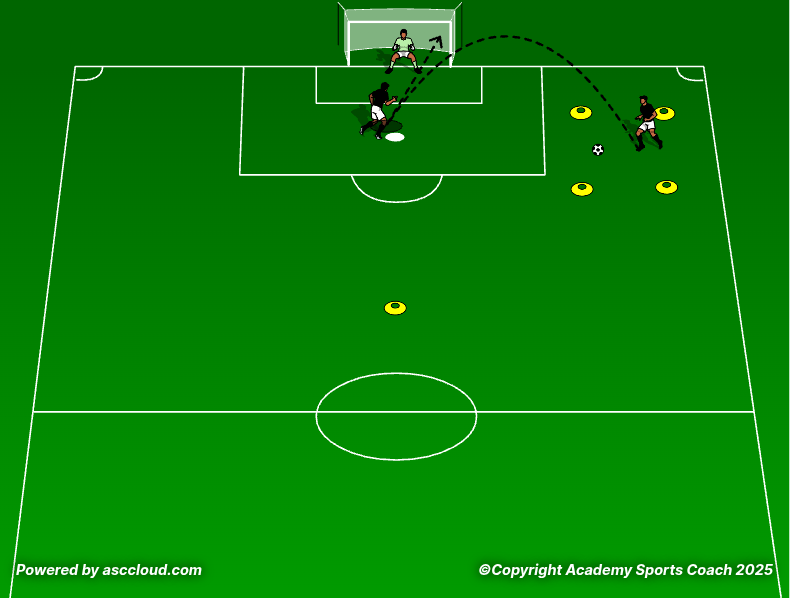By Matt Carroll
Square Crossing Drill
The Square Crossing Drill is a fun and competitive game that can be utilized to teach players crossing, receiving a pass in a tight area, attacking runs, and finally finishing. The drill can be used as a warmup to activate players technical elements, as well as their competitiveness, or as a conditioning drill to end the session.

The Square Crossing Drill starts with a crosser standing on a cone about 30 feet back from the 18 yard box. To the right or left of the 18 yard box should be a 10x10 grid with another player standing inside the box. The two players are partners, and the other teams should be partnered up in the same way. A goal should be set up in the 18 as normal, but difficulty can be increased by including a goalie or small targets for the players to score on.

Play starts with the player at the far cone playing an aerial cross to the player in the box. The player in the box needs to take the cross out of the air with their touch in a way that sets up their body to be able to play a cross in the box. If the player in the box misses the ball, takes an extra touch, or their touch takes the ball out of the box, that partner grouping is done and a new partner group sets up.

If the player in the box is able to take an effective touch that stays in the box, the initial passer then can run into the 18 yard box. The player in the box then plays them an aerial cross and the runner attempts to score either via volley or header. They then move to the end of the line and the next group begins their turn.

Scoring can vary, but a suggested method is 1 point for the touch in the box staying inside the box, 1 point for contact on the volley or header, and 3 points for scoring. This can be modified based on the challenges you include, such as a goalie or targets, or certain types of shots can be of greater value. For example, if your team struggles to get their head on the ball, allowing an additional point for a header may make players more likely to attempt it.
By Matt Carroll


